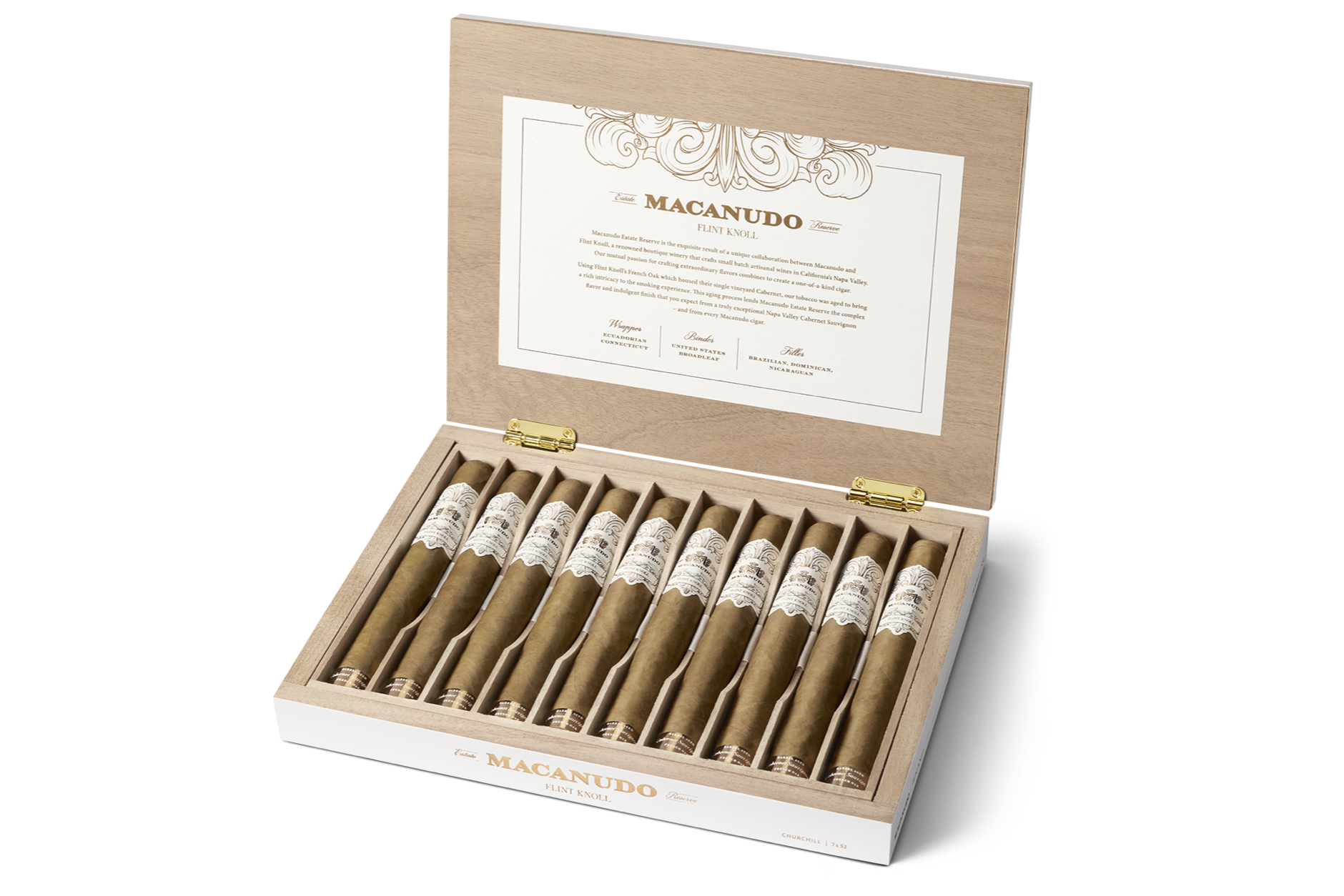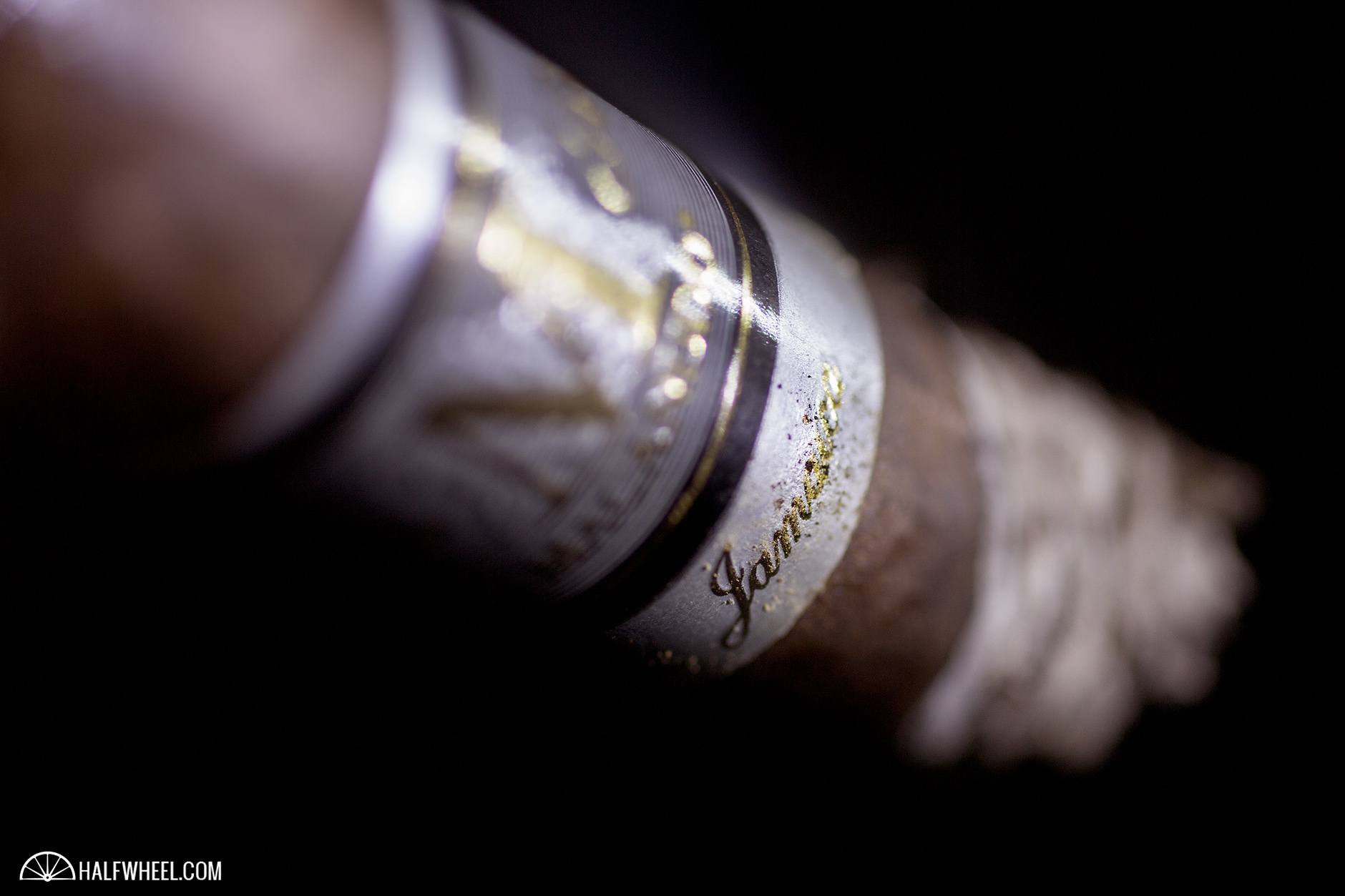There is no shortage of options when it comes to beverages with which to pair a cigar, and some of those options even make it into the cigars themselves. From infusions to barrel-aging of leaves and finished cigars, a number of spirits have made their way into cigars.
But one beverage—wine—has often found itself a polarizing suggestion when it comes to pairings. Some people love a good, hearty red wine with their cigars, others think that the fruit and tannins conflict with the flavors of a cigar. Regardless of what side of the argument you are on, it remains a popular choice for many.
Embracing the relationship between wine and cigars, General Cigar Co. partnered with Flint Knoll, a small winery in Napa, Calif., to create a new Macanudo line that featured a Connecticut broadleaf binder leaf aged in French oak barrels that once contained the winery’s single vineyard Cabernet Sauvignon.
It is called the Macanudo Estate Reserve Flint Knoll, and along with that binder, features an Ecuadorian Connecticut shade wrapper, and a filler that includes Brazilian mata fina, Dominican piloto cubano, Dominican olor, and tobacco from Nicaragua’s Jalapa region.
“The collaboration with Flint Knoll is the first of its kind for Macanudo and gives us the opportunity to explore the synergies between cigar and winemaking,” said Steve Abbot, director of marketing for Macanudo, via a press release. “We look forward to future collaborations with Aaron and his team as we expand the notion of what it means to be a Macanudo by bringing terroir, craftsmanship and innovation to life.”
The line, which is produced at General Cigar Dominicana, is offered in two vitolas.
Note: The following shows the various Macanudo Estate Reserve Flint Knoll vitolas. Some of these cigars may have been released after this post was originally published. The list was last updated on Feb. 12, 2023.

- Macanudo Estate Reserve Flint Knoll Toro (6 x 54) — $19.99 (Box of 10, $199.90)
- Macanudo Estate Reserve Flint Knoll Churchill (7 x 52) — $21.99 (Box of 10, $219.90)
88
Overall Score
The Macanudo Estate Reserve Flint Knoll Toro is an impressive new spin on a brand with a well-known and well-established profile, successfully using wine barrels to seemingly influence the profile of one leaf, which in turn colors but doesn’t dominate the overall profile. The profile doesn’t feel like too much of a departure from the overall Macanudo profile, though I would argue it’s toastier and a bit more peppery than what I think of from the Café line, as well as offering a bit more strength in its final third. This isn’t the most complex of profiles, but it does offer some good transitions and it shows very enjoyable expressions of the flavors that it does offer, a very good example of a drier, toasty profile with light wood and white pepper. While I’m not crazy about the price—which does not factor into our reviews—I do like the profile, and would gladly welcome the opportunity to smoke a few more of these in the future.
“As a seasoned cigar smoker, I admire Macanudo’s ability to remain consistent and true, decade after decade, because I’ve come to learn that this is as challenging for a cigarmaker as it is for a winemaker,” said Aaron Michaelis, founder of Flint Knoll, in a press release. “You can imagine that having the chance to contribute to the brand’s legacy in some small way has been nothing less than thrilling for me personally, as it has been for my team. Macanudo Estate Reserve Flint Knoll represents the desire of both brands to expand their horizons and I believe that together, we will bring increased excitement to the worlds of wine and cigars.”
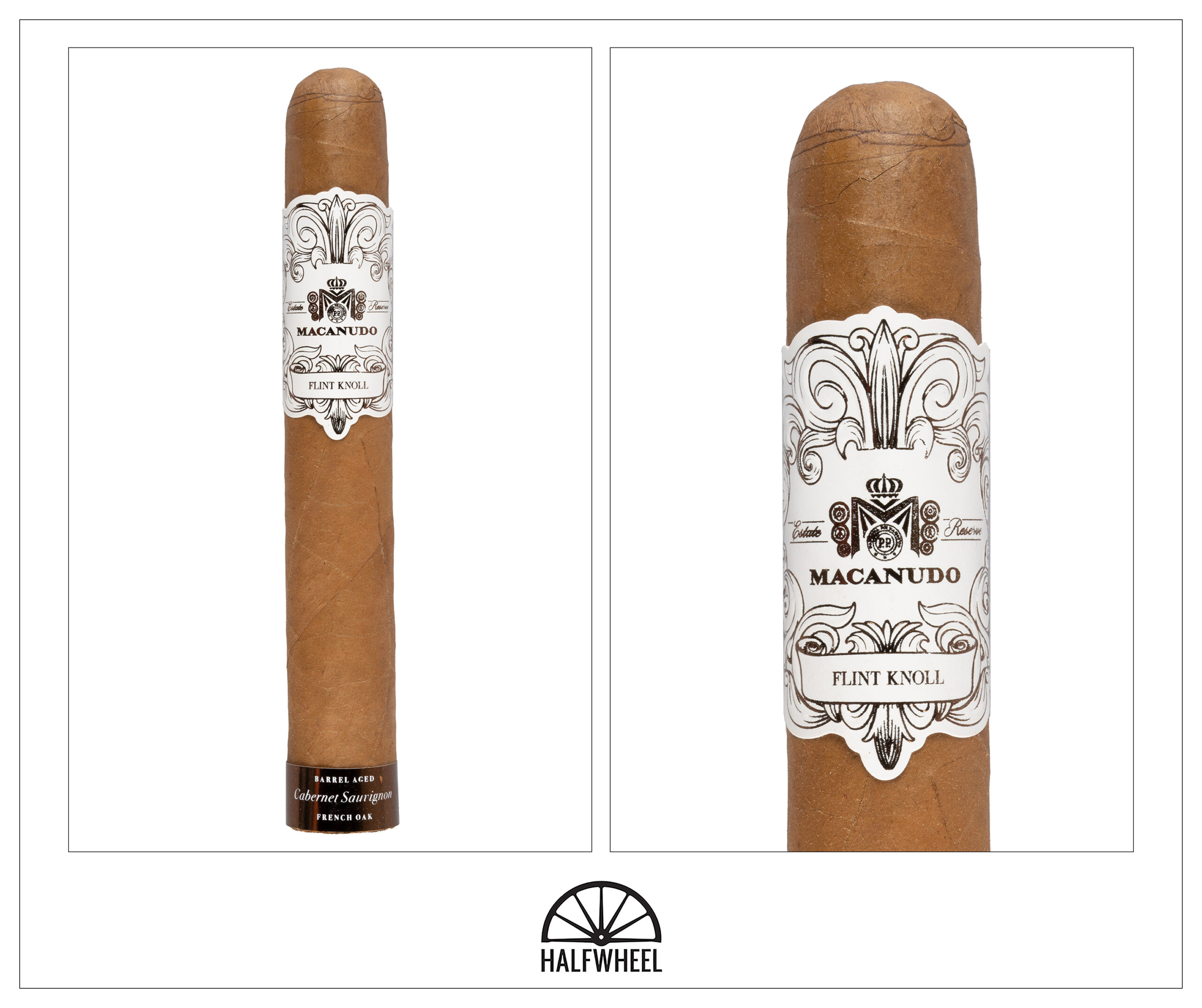
- Cigar Reviewed: Macanudo Estate Reserve Flint Knoll Toro
- Country of Origin: Dominican Republic
- Factory: General Cigar Dominicana
- Wrapper: Ecuador (Connecticut)
- Binder: U.S.A. (Connecticut Broadleaf)
- Filler: Brazil (Mata Fina), Dominican Republic (Piloto Cubano and Olor) & Nicaragua (Jalapa)
- Length: 6 Inches
- Ring Gauge: 54
- Vitola: Toro
- MSRP: $19.99 (Box of 10, $199.90)
- Release Date: October 3, 2022
- Number of Cigars Released: Undisclosed
- Number of Cigars Smoked For Review: 3
I don’t think of Macanudo having a lot of beefy releases, so the Macanudo Estate Reserve Flint Knoll Toro catches my eye as soon as I take it out of the cellophane. The copper band around the foot catches my eye for its color but probably should have caught my eye for what it says, indicating that something about the cigar has been barrel-aged in French oak that has some connection to Cabernet Sauvignon. The wrapper is a bit darker than what I think of from Macanudo, reminding me at first of the color of the wood around pencil lead. It’s still lighter than what I would call the midpoint of wrapper shades, with a matte finish that does not a lot of oiliness, as well as noticeable veins and a thin stripe that draws my attention to the seam line. The cigar is lighter in the hand than what I would say is the average for the size, though given the blend notes, I’m not as surprised since it seemed like this might use some lighter leaves. Even though it feels lighter, it is still rolled to a firm density, and certainly looks to be rolled well. If anything, the heads of the three cigars present some issues, as one cigar has a head that reminds me of a 109 vitola, while another has a oddly cut cap that doesn’t appear to be cut with the typical cylindrical blade. The foot has aromas of buttered bread, with the bread component having a thick body as it hits my nostrils. There’s a bit of light wood and pepper behind that, the latter is almost sneaky in how it hits my nose, waiting until the finish and I begin writing down some notes before it gets to work. The cold draw is very smooth, with airflow nearly ideal on all three cigars. Like the foot, the flavor leads with bread, though with less of the butter, pepper and wood. If anything, I get a slightly oily sensation on occasion, a call back to the butter in the aroma.
Given what I picked up from the Macanudo Estate Reserve Flint Knoll Toro before lighting, I’m a bit surprised to be greeted with as much pepper as I am. It’s more white pepper than black pepper, but there is a mix across the samples, and it does have a bit of a dried wood aspect to it that has me thinking of spent barrels. Retrohales are toasty as well, while the profile is creamier and fairly full-bodied on the taste buds. The first inch is a true one-two punch between the flavor and the retrohale, making experiencing the cigar via both methods a requirement to experience everything it has to offer. As the first third progresses, I begin to taste what might be the effects from the wine barrels on the binder leaf. It is a subtle nuance that appears in the aroma at first, then moves to the taste buds, manifesting with the same kind of flavor that I find from full-bodied Chardonnays. That flavor comes and goes, swapping places with a light, dry and crispy wood flavor that reminds me of a well-toasted but not charred barrel. On occasion, that flavor veers off into a very light white toast, and when it does, the flavor gets a bit singular and shallow; thankfully it only happens in one of the three cigars. The final puffs of this section bring on a rather unique profile, one that draws on white bread and wood but are far more dynamic than either of those descriptions would even begin to suggest. The flavor profile in the first third is thin and draws from a small portion of the flavor wheel but hits medium-plus intensity, while body is medium to medium-plus and strength is almost non-existent. Construction is very good thus far with plenty of smoke and an even burn line, though the ash is more delicate than average.

Whatever the flavor is that finishes up the first third, it departs not long into the second third, returning the profile to where it was not long after the cigar was lit. It’s toasty and crisp on the palate, with a bit less pepper on the whole but a much more pleasant and distinctive aroma as the cigar rests. While the retrohales are still peppery, I get a bit of popcorn tagging along with it. Creaminess begins to return to the taste buds, particularly on the initial part of each puff, before being pushed aside by the dry woodiness that appears to be a return of the barrel flavor. The midway point sees that cigar get just a bit smokier, sort of like a campfire that hit its stride without burning any charred wood, a slightly different spin on the barrel wood thread that has run throughout the cigar. I do notice that the ash has a bit tougher time holding ash is gets farther into this section, and when it breaks off there’s not a clean line of ash, even though there is still a cone from the center of the ash. Pepper continues to get more intense through the nose, and is now much more black pepper-dominant. Flavor is medium to medium-plus at its strongest points, body is medium and strength continues to be quite mild. Construction on the whole is good, with minor annoyances from the ash and the occasional touch-up.
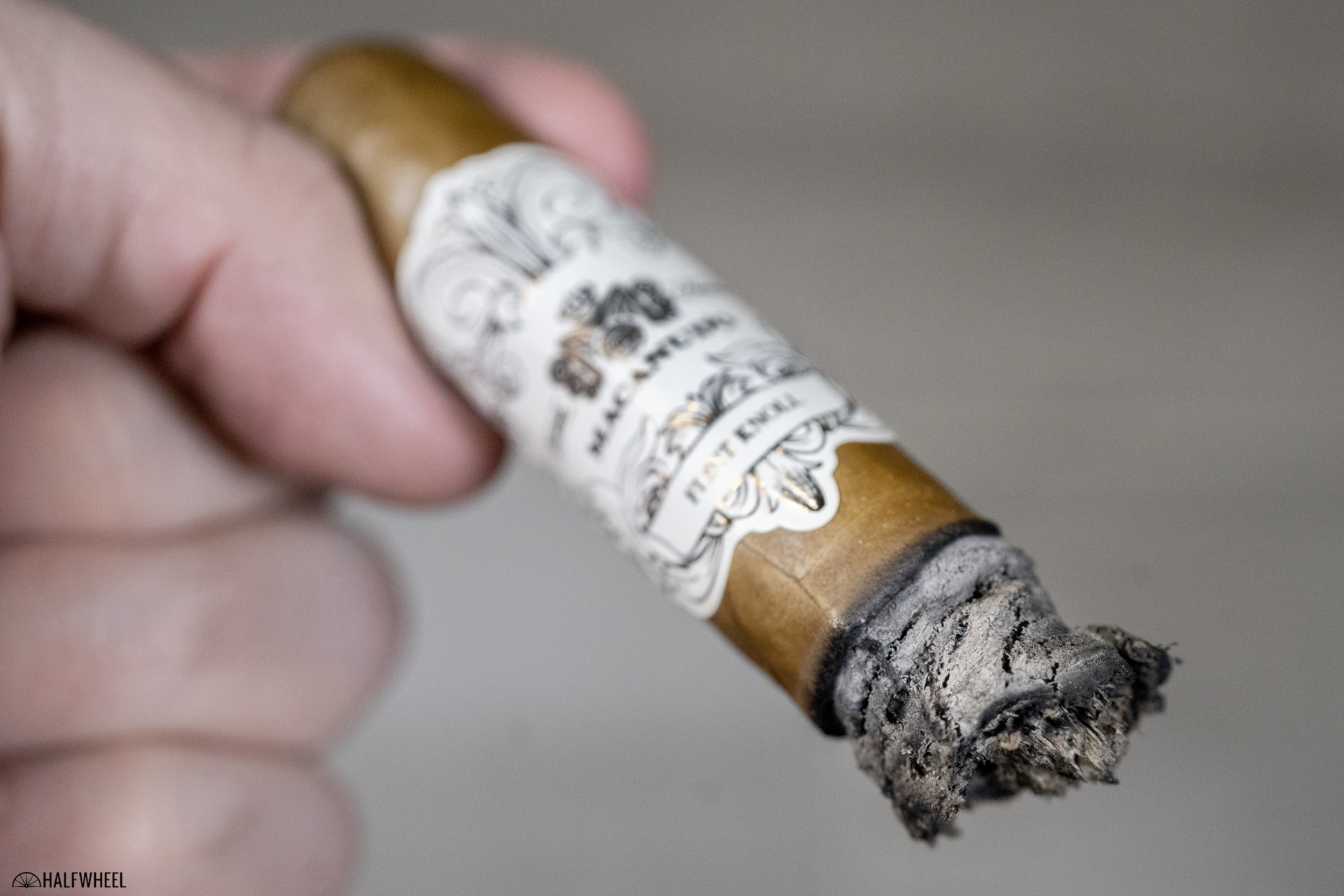
The final third of the Macanudo Estate Reserve Flint Knoll Toro carries on the building smokiness, though it seems like the pepper has tailed off just a bit. A subtle pivot in the flavor brings a bit of sourdough bread, turns it toasty, and then lets it go to get back to the wood barrel flavor as the lead flavor. It’s not too long into the final third of the first cigar—and coincidentally when I stand up for a few minutes—that I feel some nicotine strength from the cigar, something I didn’t imagine I’d say about any Macanudo. There’s a touch more black pepper in the profile than there was earlier, and it now hits a bit further back on the tongue than the profile has done thus far, even hitting the very top of the throat at times. I’m not crazy about the increasing char that the cigar picks up in its final third, as even though it’s a fairly light change compared to what I’ve found in other cigars, it is just prominent enough to become a leading characteristic. That said, two of the three cigars stay palatable enough to smoke down fairly far, and with a now very slow burn rate—though no combustion issues—that final third can get drawn out like the last two minutes of a close basketball game. When it does, a bit more sourdough bread returns along with a sharper white pepper, bringing the cigar to its conclusion. Flavor finishes medium-full, body is medium, and strength is now in medium territory. Construction remains very good, though as I will expand on below, each cigar suffers some wrapper damage. Thankfully it doesn’t adversely affect things other than from a visual perspective.
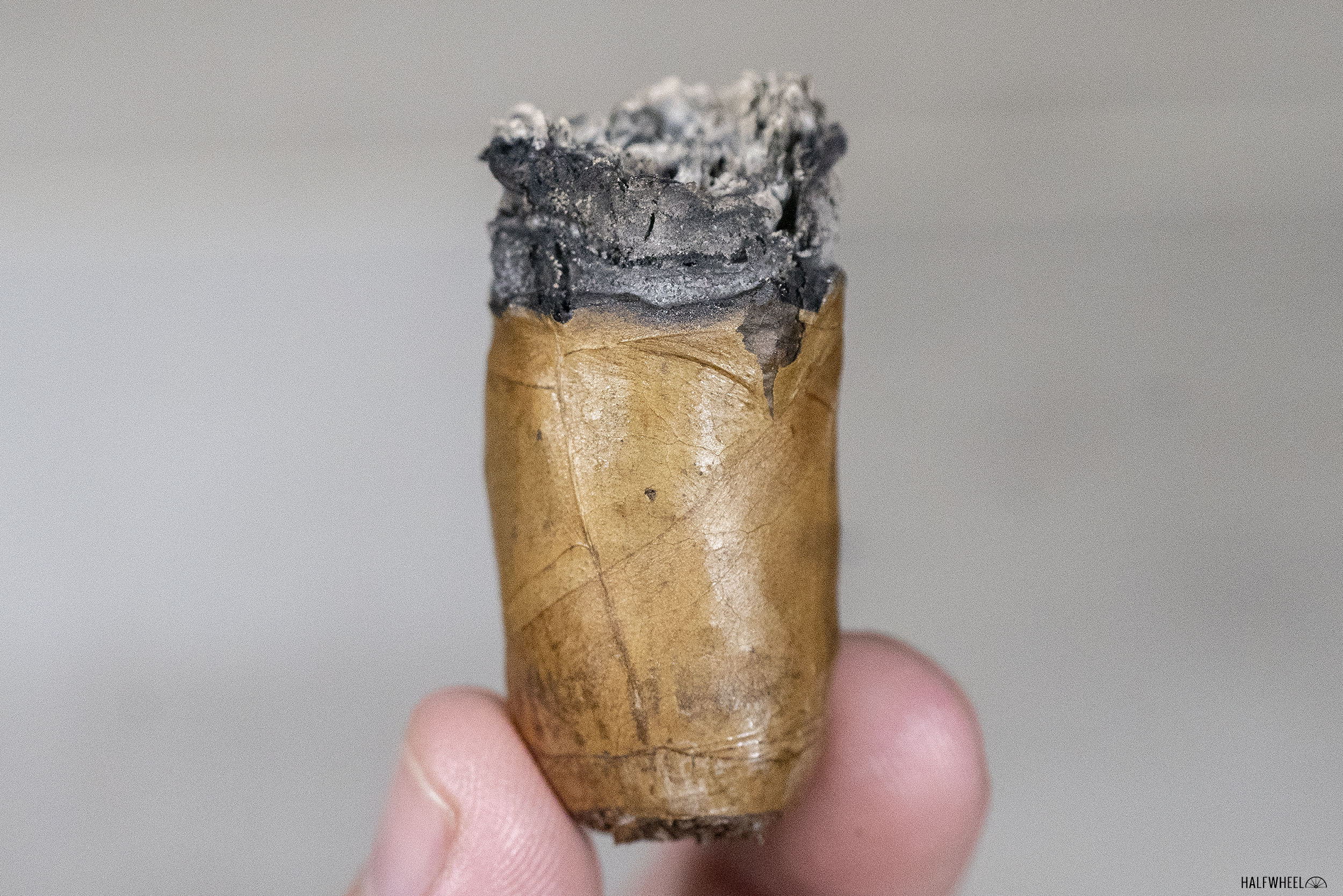
Final Notes
- The Macanudo Estate Reserve Flint Knoll Toro is certainly in the running for least durable ash I’ve experienced in recent memory. Some of the cigars in this review performed better than the others, but on the whole, it’s pretty fragile.
- Speaking of fragile, the wrapper leaf is fairly delicate. This is most notable when removing the main band, which is pretty well-adhered to itself, as each of the three cigars smoked for this review suffered some sort of damage.
- I don’t know if things like this are taken into consideration by cigar makers, but delicate wrappers need to have bands that are applied with a lighter adhesive and a thicker paper that doesn’t absorb that adhesive.
- The foot band wasn’t much better in terms of adhesive, but it was fairly easy to slide off, which the main band was not.
- The bands draw on the designs used for Flint Knoll’s wines, and it’s easy to see the connection.
- Flint Knoll features the cigars on its website.
- I have not yet had the opportunity to try Flint Knoll’s wines, but I’d certainly be interested in doing so should the opportunity present itself.
- When the Macanudo Estate Reserve Flint Knoll was announced at the end of September 2022, it marked the third time in two weeks, that General Cigar Co. and its affiliated companies, had announced a new cigar that features a binder that was aged in barrels that were previously used to make an alcoholic beverage.
- One cigar, after I was done smoking it, left a finishing note that started toasty but evolved into more of a dry cardboard sensation on my taste buds, something I can’t recall happening from other cigars.
- There is just enough nicotine strength in the Macanudo Estate Reserve Flint Knoll Toro that it registers on my radar. It’s far from enough to warrant looking for some white sugar, but I was surprised by it during the first cigar.
- General Cigar Co. advertises on halfwheel.
- The cigars for this review were purchased by halfwheel.
- Final smoking time was two hours and 10 minutes on average.
- Site sponsors Cigars Direct, Corona Cigar Co. and Famous Smoke Shop carry the Macanudo Estate Reserve Flint Knoll Toro.
88
Overall Score
The Macanudo Estate Reserve Flint Knoll Toro is an impressive new spin on a brand with a well-known and well-established profile, successfully using wine barrels to seemingly influence the profile of one leaf, which in turn colors but doesn’t dominate the overall profile. The profile doesn’t feel like too much of a departure from the overall Macanudo profile, though I would argue it’s toastier and a bit more peppery than what I think of from the Café line, as well as offering a bit more strength in its final third. This isn’t the most complex of profiles, but it does offer some good transitions and it shows very enjoyable expressions of the flavors that it does offer, a very good example of a drier, toasty profile with light wood and white pepper. While I’m not crazy about the price—which does not factor into our reviews—I do like the profile, and would gladly welcome the opportunity to smoke a few more of these in the future.
I strive to capture the essence of a cigar and the people behind them in my work – every cigar you light up is the culmination of the work of countless people and often represents generations of struggle and stories. For me, it’s about so much more than the cigar – it’s about the story behind it, the experience of enjoying the work of artisans and the way that a good cigar can bring people together. In addition to my work with halfwheel, I’m the public address announcer for the Colorado Rockies and Arizona Diamondbacks during spring training, as well as for the Salt River Rafters of the Arizona Fall League, the WNBA's Phoenix Mercury and previously the Arizona Rattlers of the Indoor Football League. I also work in a number of roles for Major League Baseball, plus I'm a voice over artist. Prior to joining halfwheel, I covered the Phoenix and national cigar scene for Examiner.com, and was an editor for Cigar Snob magazine.






